Zoom on the galaxy | ||||
Journey to the Center of our Galaxy |  Automatic translation Automatic translation | Updated June 01, 2013 | ||
The central part of our Galaxy, as we see from the Paranal Observatory of ESO, is extremely rich. The incredible beauty of the images that come to us, is essentially due to the exceptional quality of sky observing site of the ESO. It is on this site that is precisely the telescope (VLT) of ESO. The mosaic in true color, the central region of our Galaxy, was assembled by Stéphane Guisard, an engineer at the Paranal Observatory, from 1200 images. The image shows the region of the sky from the constellation Sagittarius (the Archer) in the constellation Scorpio. The colored region of Rho Ophiuchi Antares spring and clearly on the right of the image. | We also see a slash of dust through the center of our Milky Way. This is where lies the super-massive black hole in the Milky Way. Our Galaxy is filled with remarkable Trifid nebulae such as the Lagoon, the Pipe, NGC 6357, NGC 6334... Image: The center of our galaxy seen from La Silla in Chile. Credit ESO: Giga Galaxy Zoom | 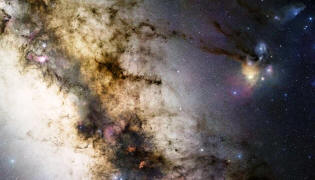 | ||
Zoom on the Trifid Nebula | ||||
The zoom on the Trifid Nebula shows the incredible wealth of stars in our galaxy. Located 5500 light years away in the constellation Sagittarius (the Archer), the Trifid Nebula, rich in hydrogen, we exposed on that image, its colors. The red comes from large amounts of hydrogen in the central, heated by young stars. This beautiful sky object, also contains a region of a misty blue that extends to the northern tip top. Dark bands of dust seem to divide the nebula into three lobes, hence its name. These thick layers of dust that block visible light are in fact star-forming regions when viewed in light of the near infrared. Charles Messier was the first astronomer to describe it as a star cluster with a surrounding fog. | Trifid name was then given by the English astronomer John Herschel. The Trifid Nebula is easily seen in the western part of Sagittarius, even with a small telescope. Image: The Trifid Nebula taken from La Silla, Chile (ESO). The hundreds of thousands of nearby stars show the incredible richness of our Galaxy. | 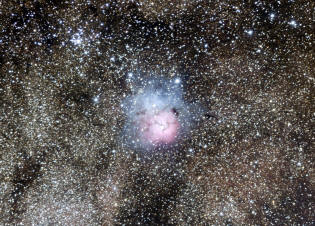 | ||
Zoom on the Lagoon Nebula | ||||
The Lagoon Nebula is a giant interstellar cloud attractive and fascinating located about 4 to 5 thousand light years away in the constellation Sagittarius (the Archer). The dark spots you see around the nebula are huge clouds of gas and dust that collapse under their own weight and will soon give birth to groups of young stars that will light up. Some of the smaller clouds are called "cells" and the most prominent have been cataloged by astronomer EE Barnard. A large plant of bright stars known as the "Hourglass Nebula or MyCn18" appears at the top right of the Lagoon Nebula. The bright light of the nebula an hourglass, has a strong blue, named Herschel 36, which is rooted in his heart. Powerful ultraviolet radiation from another star, Sagitarii 9, also heats the nebula. The Lagoon Nebula is home to the young open cluster NGC 6530 stellar. This region of 50 to 100 stars flicker in the lower left of the nebula. Observations show that the cluster is slightly ahead of the nebula itself. | The name of the Lagoon Nebula is the broadband-like dark lagoon in the middle of the nebula and the brightest into two sections. This is Giovanni Battista Hodierna who discovered the Lagoon Nebula around 1654, was described as a nebulous object. Philippe Loys de Chéseaux describes the cluster of stars in 1746. A year later, Guillaume Le Gentil has added his own observations, and since, astronomers call the Lagoon Nebula as both a nebula and star cluster. Charles Messier in 1764 has cataloged the Lagoon Nebula as the eighth entry in its catalog (Messier 8). This subject remains an icon for astronomy enthusiasts. | 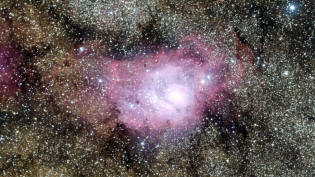 Image: The Lagoon Nebula taken from La Silla, Chile (ESO). The hundreds of thousands of nearby stars show the incredible richness of our Galaxy. | ||
Zoom on the supergiant Antares | ||||
Antares, α (alpha) is a variable star Scorpii red, the brightest in the constellation Scorpio, located at an estimated distance of 550 light-years. The sixteenth brightest star in the night sky, Antares is one of the best known supergiants. Antares is extremely massive and intrinsically bright, while its surface temperature is only 3300 ° C. Antares has a luminosity 10,000 times that of our sun despite its very cold temperatures, compared to the stellar standards. Our Sun is a dwarf compared to Antares since the diameter of Antares is about 800 times larger than our star. The outer surface of Antares would extend beyond the orbit of Mars, until the asteroid belt, if it was located in place of the Sun. Despite its girth, Antares has a mass of only 15.5 solar masses, which explains the very low average density of this huge star. Antares, like many stars is a binary system. Her companion, hot blue is called Antares B. | These two stars give the yellow color orange dust from the large reflection nebula that we see in this picture. Image: The supergiant Antares in the constellation Scorpio. credit ESO: GigaGalaxy Zoom | 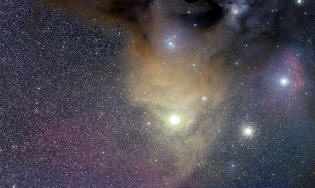 | ||
Zoom on the rho Ophiuchus cloud | ||||
The dark cloud of dust around Rho Ophiuchus at a distance of about 400 light years, making it one of the closest star-forming regions. The cloud is located both in the constellation Scorpius and Ophiuchus that of (Ophiuchus). This remarkable giant cloud around the star ρ (Rho) Ophiuchi, is rich in molecular hydrogen. | Over time, this cloud will shrink slowly under its own weight and form new stars. Image: The dark cloud of dust around Rho Ophiuchus. credit ESO: GigaGalaxy Zoom | 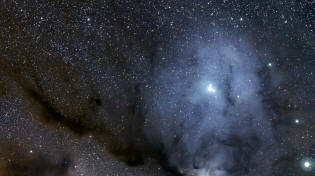 | ||
Zoom on the Pipe Nebula | ||||
The Pipe Nebula is a dark nebula in the constellation Ophiuchus. This cloud of gas and dust spread over a vast territory in the sky, and it is for an even larger complex known as Dark Horse Nebula. Despite its darkness, observers can easily locate the Pipe Nebula to the naked eye, away from city lights. It is located about one third of the way between the Lagoon Nebula and the star Antares. When we look at the Pipe Nebula, two elements stand out distinctively. One is the pipe and the other home to the pipe. | The nebula opaque designed by the smoke of the pipe is a cloud that absorbs the light of background stars in the Milky Way. Edward Emerson Barnard, the pioneer of astrophotography, cataloged a series of dark nebulae, Barnard 59, 65, 66, 67 (hose pipe), also known as LDN 1773 and Barnard 78 (home to the pipe) , also known as LDN 42. Image: The dark cloud of the Pipe Nebula. credit ESO: GigaGalaxy Zoom | 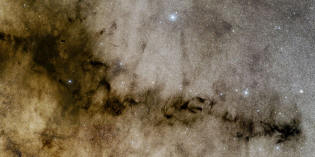 | ||
Zoom on the star clusters M6 or the Butterfly | ||||
This butterfly with spread wings, named Butterfly Cluster is an open cluster of stars located about 1,600 light-years away in the constellation Scorpio. This cluster of size 20 light years, contains hundreds of young blue stars. The brightest star cluster is extremely massive, it is a supergiant BM Scorpii (also called HD 160371). Its orange-yellow color and contrast, the highlights in a neighborhood dotted with blue stars. It seems to be the Greek astronomer Ptolemy in the first century AD who recorded this cluster for the first time by observing a neighboring region now known as Messier Object 7. The official credit for this discovery is, however, after the Italian astronomer Giovanni Battista Hodierna who recorded the mass of Papillon in 1654. A century later, it was rediscovered by several astronomers, and in 1764, Charles Messier added it as the sixth entry in his famous catalog (Messier 6). | Estimates of the age of the cluster range from 50 million years and 100 million years. Image: The star clusters of Butterfly is characterized by the presence, among many blue stars, an orange-yellow supergiant, apparent magnitude 4.2. | 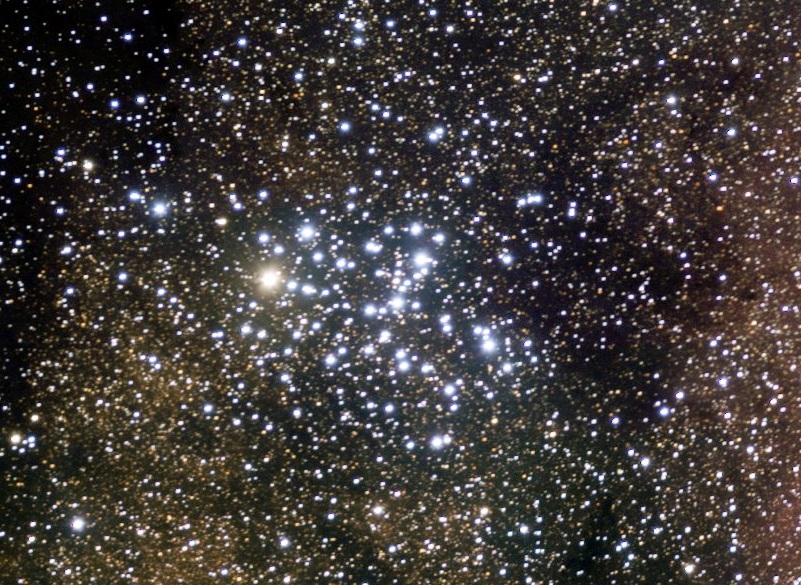 | ||
Zoom on War and Peace Nebula, NGC 6357 | ||||
The nebula NGC 6357, War and Peace Nebula in English, is an emission nebula located about 8 000 light years from Earth towards the constellation of Scorpio. | Interstellar winds, radiation power of the stars and gravity combine to give these veils of dust and gas, beautiful forms. Image: This beautiful photograph in visible light, the nebula NGC6357, vaguely resembles a lobster, hence its nickname. | 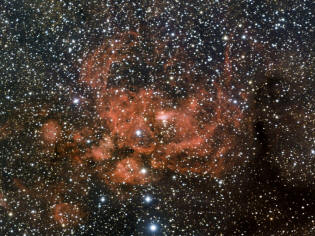 | ||
Zoom on Nebula Cat's Paw, NGC 6334 | ||||
The nebula NGC 6334 or Cat's Paw, the Cat's Paw in English, is a complex emission nebula, located 5 500 light-years away towards the constellation of the Scorpion (Scorpius). Observers can see, with the naked eye, the nebula Cat's Paw, near the tip of the tail of Scorpio, in the southern region of the constellation. The red colors of the nebula of Cat's Paw from the blaze of new stars, located within it. Some of them are ten times more massive than our Sun, whose mass is equal to 1.9891 kg x1030. These young stars are born in the last few million years. Sheltered behind massive clouds of dust, the stars illuminate and heat the surrounding gas, giving the red lights. Red is the signature of ionized atoms of hydrogen. Sir John Herschel, English mathematician and astronomer, discovered the Cat's Paw Nebula June 7, 1837, observing from the Cape of Good Hope in South Africa. | Since it is referenced as NGC 6334 in the new catalog. Image: The nebula NGC 6334 resembles a trace of Cat's Paw, hence its name. It is sometimes called the nebula of the Bear Paw. The red color comes from the blaze of new stars located at its heart. Red is the signature characteristic of ionized atoms of hydrogen. | 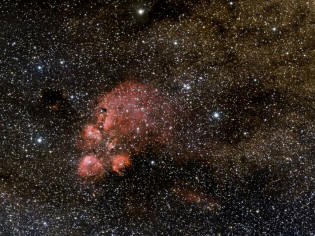 | ||
"The data available on this site may be used provided that the source is duly acknowledged."



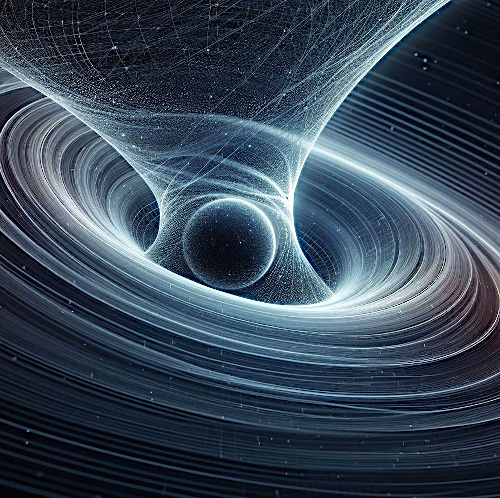 The curvature of time, a non-intuitive concept!
The curvature of time, a non-intuitive concept!
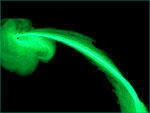 Escape or escape speed
Escape or escape speed
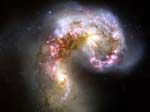 Fusion of galaxies and black holes
Fusion of galaxies and black holes
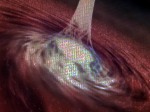 Quasars or nuclei of galaxies
Quasars or nuclei of galaxies
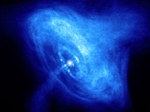 Neutron stars and pulsars
Neutron stars and pulsars
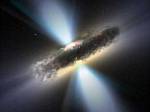 Black hole, massive star residue
Black hole, massive star residue
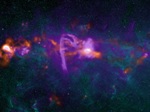 Sagittarius A, our black hole in 2013
Sagittarius A, our black hole in 2013
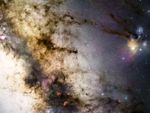 Journey to the center of our galaxy
Journey to the center of our galaxy
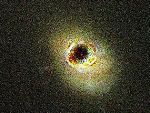 In search of black holes
In search of black holes
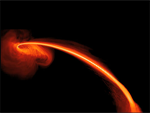 A black hole swallowing a star
A black hole swallowing a star
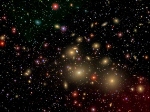 Super giant black hole in NGC 1277
Super giant black hole in NGC 1277
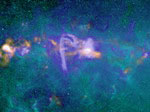 Central area of the Milky Way
Central area of the Milky Way
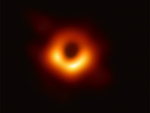 The first image of a black hole
The first image of a black hole